August 2020
August 31, 2020
Woman vs. Bugs
October 1985: Deciding that a single can of bug spray hadn't been enough, Marilyn Lucas set off 15 cans simultaneously. The resulting explosion blew the roof off her house. The bugs survived.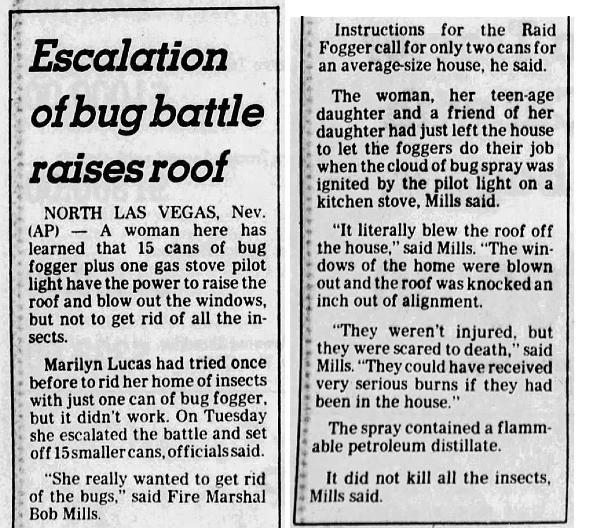
Fort Worth Star Telegram - Oct 30, 1985
Posted By: Alex - Mon Aug 31, 2020 -
Comments (6)
Category: Insects and Spiders, 1980s
Steam-Powered Motorcycle
What happens in a crash that splits the boiler open?
Source.
Posted By: Paul - Mon Aug 31, 2020 -
Comments (4)
Category: Death, Inventions, 1930s, Motorcycles
August 30, 2020
Aroma of Cocaine
In 1981, Warren Woodford of Atlanta, Georgia was granted a patent (No. 4,260,517) for a method of producing the "aroma of cocaine". From the patent:Olfactory conditioning by brain trigger stimulus has recently found application in law enforcement agencies. In some instances, narcotics officers are permitted to light a marijuana cigarette during their training in order to allow them to later react to the characteristic aroma of marijuana smoke. Similarly, officers may be exposed to the aroma of cocaine so as to familiarize them with its distinctive aromatic smell...
Due to the legally controlled nature of such substances as cocaine and marijuana, it is usually not possible to freely disseminate samples of such substances to everyone who might wish to become acquainted with the aromas of these substances. Drug familiarization programs have as a result been limited by the availability of the drugs themselves.
It is therefore desirable to find alternative sources for the aroma of certain controlled substances.
I'm surprised this was never turned into a perfume.
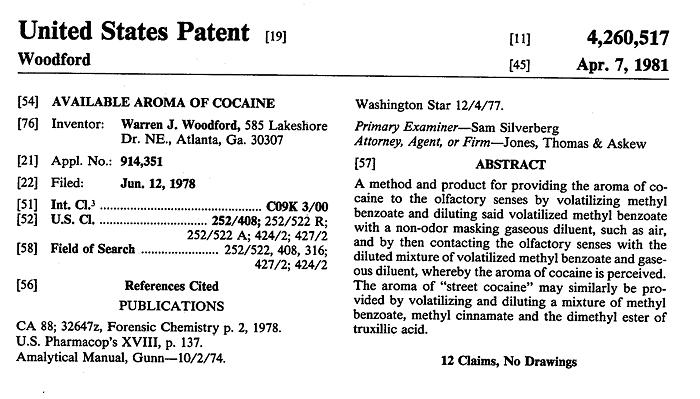
Posted By: Alex - Sun Aug 30, 2020 -
Comments (2)
Category: Drugs, Patents, 1980s, Perfume and Cologne and Other Scents
Sea Mail
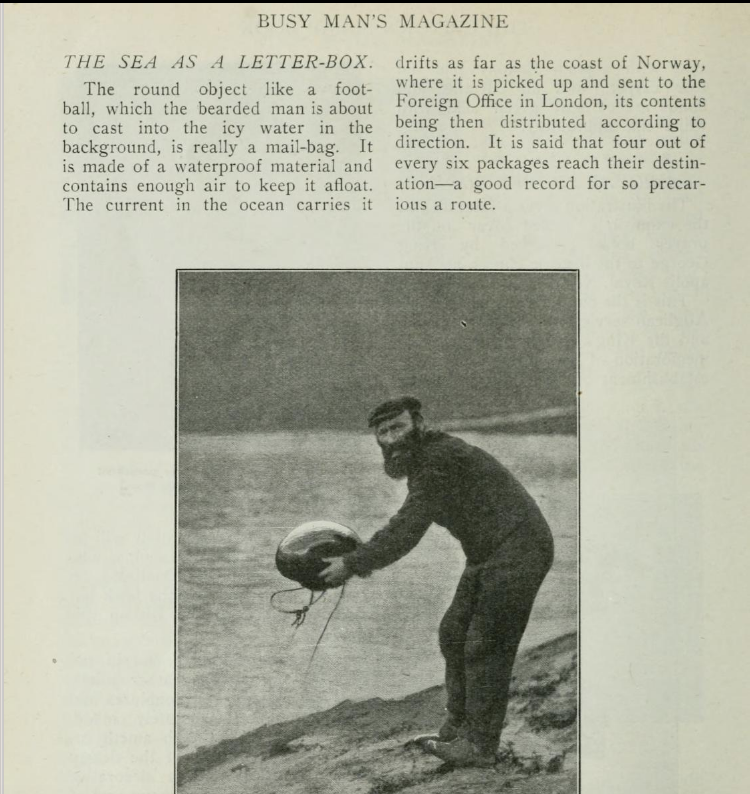
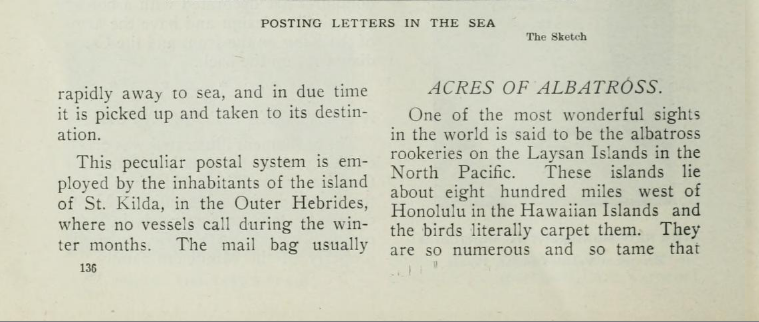
Posted By: Paul - Sun Aug 30, 2020 -
Comments (3)
Category: Communications, Oceans and Maritime Pursuits, Regionalism, Europe
August 29, 2020
Elephants on marijuana
As the author of Elephants on Acid, this news story naturally caught my eye:Elephants are notorious for being VERY resistant to the effect of drugs. That's why, in the 1962 'elephants on acid' experiment, the experimenters gave the elephant a massive dose of LSD — and injected it — to make sure it would have an effect. As it turned out, the LSD had a dramatic effect. The elephant dropped dead.
It seems that the Warsaw Zoo researchers are being far more cautious. They're initially only giving the elephants a dose of CBD equivalent to what a horse would receive. Plus, the elephants will be ingesting it, which allows the drug to enter their system more gradually (as opposed to an injection). So my guess is that the CBD will have very little effect on the elephants. Unless the dose is later dramatically increased.
More info: ibtimes
Posted By: Alex - Sat Aug 29, 2020 -
Comments (3)
Category: Animals, Drugs
The Wizard of Speed and Time
Full story here.
Posted By: Paul - Sat Aug 29, 2020 -
Comments (1)
Category: Movies, Stop-motion Animation, Special Effects, Fantasy, 1970s
August 28, 2020
Willem de Kooning toilet seat
By the mid-1980s, works by Willem de Kooning were fetching over a million dollars. So when James Garcia and Joseph Lada found a three-hole outhouse seat stored in their basement that apparently had been painted by de Kooning, they figured they had a potential masterpiece on their hands. De Kooning's wife confirmed he had painted the toilet seat "very fast" for a croquet party in 1954. He had been trying to make the wood look like marble.The sale raised the question: was this really art? Some said no. Others, such as de Kooning's friend John MacWhinnie, argued that, "It's a youthful, exuberant example of the painter at the height of his abstract expressionism... In spite of itself, it became art, simply out of a choice the de Kooning made."
It ended up selling for $50.
More info: Baltimore Sun
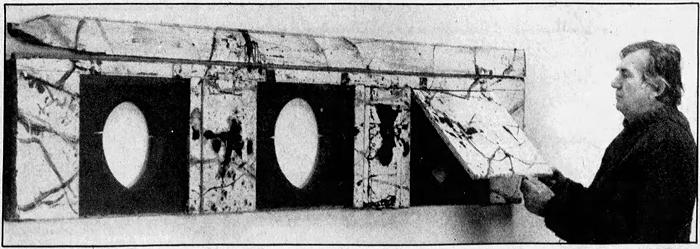
Tampa Bay Times - Feb 3, 1985
Posted By: Alex - Fri Aug 28, 2020 -
Comments (1)
Category: Art, 1980s
North to Alaska
Here's a type of song, a story ballad, that seems pretty much extinct these days. (Any WU-vie who can cite a contemporary instance gets a No-Prize!) It seems, judging by the film clips in this video, to recount the entire arc of the movie!The Wikipedia page for the film.
Posted By: Paul - Fri Aug 28, 2020 -
Comments (4)
Category: History, Movies, Music, Regionalism, 1960s
August 27, 2020
The toenails of King Victor Emmanuel II of Italy
Victor Emmanuel II, who was king of Italy from 1861 to 1878, had a strange habit which isn't recorded on his wikipedia page.Each year he would let the nail of his big toe grow. Then he would cut the nail off and have a jeweler polish it and frame it in gold. The king would then present this oddity to his mistress (and eventual wife), the Countess Rosa Mirafiori. She eventually accumulated fifteen royal toenails.
I assume these royal toenails must be preserved in a museum somewhere. But if so, I haven't been able to track down where. Nor can I find any pictures of them.
Unless, of course, the story is an urban legend. The lack of good sources does make me a bit suspicious.
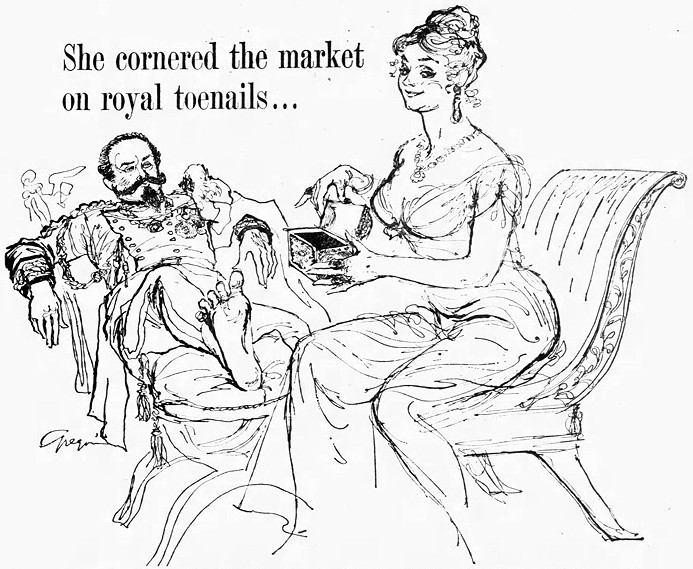
Chicago Tribune - Mar 26, 1961

Nebraska Advertiser - May 15, 1896
Posted By: Alex - Thu Aug 27, 2020 -
Comments (3)
Category: Royalty, Nineteenth Century, Feet
Artwork Khrushchev Probably Would Not Have Liked 28
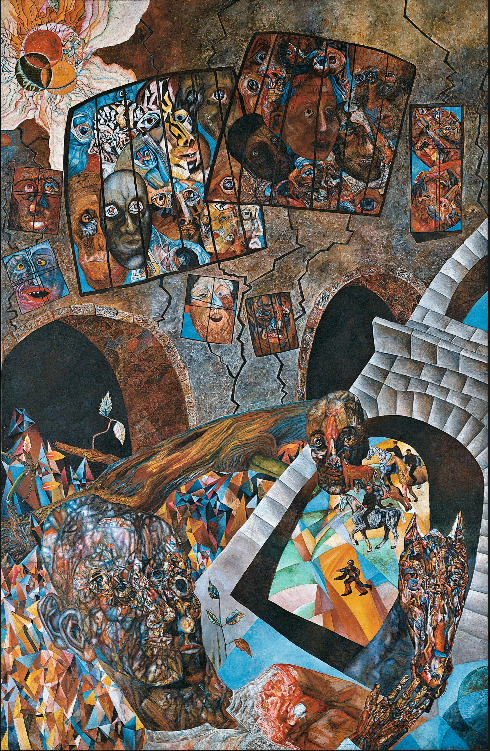
Tatiana Glebova, 1927.
In "Prision," of which there is a preparatory drawing, the painter depicts a world of multiple orientations through diverse interconnected viewpoints, and shows various heads with their musculature visible as if to reveal to us their interminable growth process. Glebova devoutly believed Filonov’s theories on the “universal flowering” and, like him, held that painting should reflect a growth process of the world similar to that of plants, according to which it was permanently active as an independent being.
Source of text.
Posted By: Paul - Thu Aug 27, 2020 -
Comments (0)
Category: Art, Avant Garde, Body Modifications, 1920s, Russia
| Get WU Posts by Email | |
|---|---|

| Who We Are |
|---|
| Alex Boese Alex is the creator and curator of the Museum of Hoaxes. He's also the author of various weird, non-fiction books such as Elephants on Acid. Paul Di Filippo Paul has been paid to put weird ideas into fictional form for over thirty years, in his career as a noted science fiction writer. He has recently begun blogging on many curious topics with three fellow writers at The Inferior 4+1. Chuck Shepherd Chuck is the purveyor of News of the Weird, the syndicated column which for decades has set the gold-standard for reporting on oddities and the bizarre. Our banner was drawn by the legendary underground cartoonist Rick Altergott. Contact Us |

